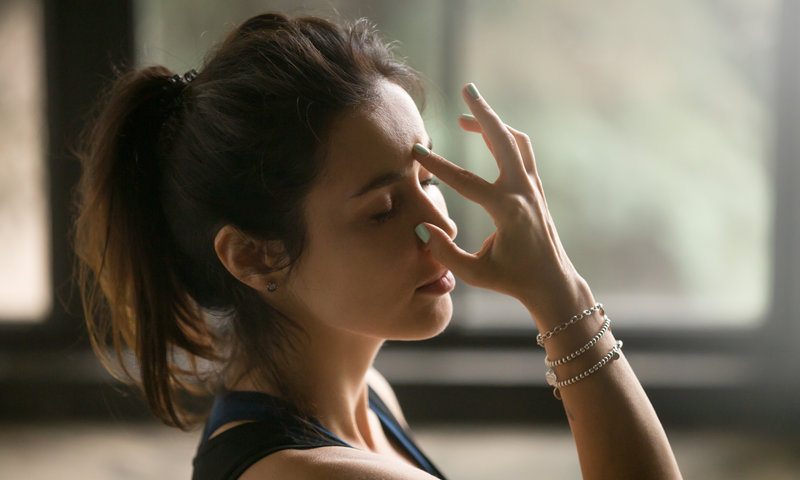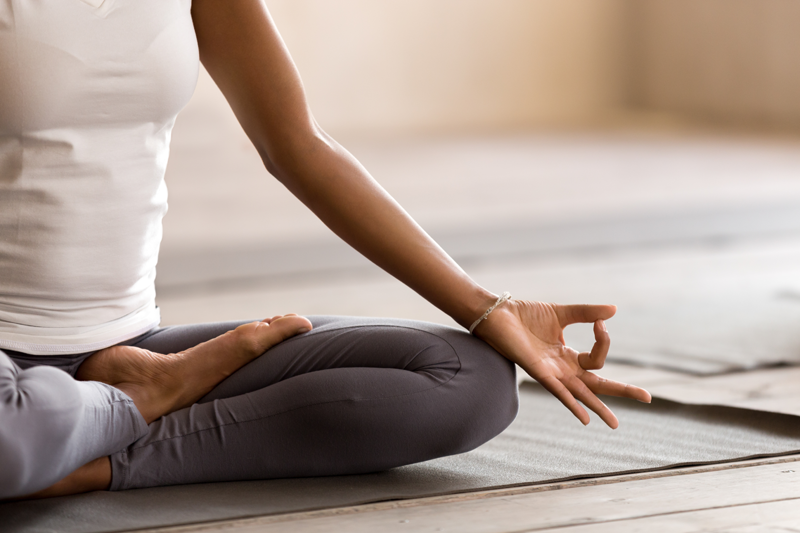
The Beautiful Symbiosis Between Ayurveda and Yoga
8th November 2019
10 Niyamas: Personal Observances to Deepen Your Yoga Practice
15th November 2019Yoga: The Power of Breath for Physical and Emotional Balance

Whether we are awake or sleeping, the body breathes involuntarily. Breathing is something we do daily and is a vital function of life. In yoga, breathing is referred to as pranayama. When translated from Sanskrit, prana means life force and Ayama means stretching or extending. Thus, the word ‘Pranayama’ means the control of life force or the extension of breath. For physical and emotional balance, every cell in the body needs oxygen. With this in mind, it’s no surprise that controlled breathing can improve our physical and mental health and decrease the effects of stress on the body. In this article, we explore the four key pranayamas for a balanced body and mind and discuss yoga: the power of breath for physical and emotional balance. By the end of the article, you’ll want to pack your yoga bag and head to the studio!
1. Nadi Sodhana
Also referred to as alternate nostril breathing, Nadi Shodhana is a pranayama to balance the body and mind. This breathing exercise balances the Ida and Pingala, the two most important energy channels in the body. Nadi Shodhana is best described as a technique that balances the intake of breath through both nostrils. Often, one nostril is more blocked than the other. As the blocked nostril is taking in less oxygen than the other, our breathing can be thrown off balance. Practising alternative nostril breathing will ensure that both sides of the brain get an equal amount of oxygen. Additionally, this pranayama relaxes the mind and balances our entire system. The exercise can also improve focus and allow us to concentrate better on daily activities.
To practice Nadi Shodhana, place your right middle and pointer fingers in the palm of your hand, leaving just your little finger, ring finger and thumb free. Take your right thumb over your right nostril and inhale through the left nostril. Now take your ring finger and place it over your left nostril to exhale through the right nostril. Next, leave your hand as it is and inhale through the left nostril, then switch, placing your thumb over your right nostril and exhaling through the left. Repeat this until you are finished with your breathing exercise.
2. Kapalabhati
Kapalabhati is sometimes referred to as ‘Skull Shining Breath’. The purpose of this exercise is to cleanse the breathing channels through strong and fast exhalation. Engaging the abdominal muscles, the breath should be exhaled as fast as possible, followed shortly by a natural inhale. This pranayama can improve circulation to the brain to energise the mind – this is why it’s given the ‘Skull Shining’ nickname. Additionally, the breathing exercise stimulates the digestive system by massaging the abdominal muscles and organs.
To practice Kapalabhati, sit comfortably with a tall, straight spine and exhale completely. Breathe in through both nostrils before sharply exhaling through the nose while pulling your navel toward your spine. The exhalation should be short and quick but very strong, while the inhalation short be short and passive. Repeat the process, pulling your navel in as you breathe out and soften it as you breathe in. For best results, do one round of 30 and rest for a minute before repeating the process. If 30 is too strenuous, begin with 15 and work your way up.

3. Ujjayi
Ujjayi breathing is practised in Ashtanga yoga to create heat and stability within the body. This exercise is also known as Ocean Breath or Victorious Breath. The pranayama can help yogis to take their time with each posture, reminding them that balanced breathing is more important than an idealised shape. The technique is great to practice after a series of strenuous poses to lower the heart rate, making Ujjayi particularly helpful in Vinyasa Flow classes. Like any breathing exercise, Ujjayi can be used to increase the awareness of our breath. Additionally, the exercise can teach us to use our full lung capacity with every breath. Doing so, rather than breathing shallowly, will allow better flow of oxygen to the brain.
Practice Ujjayi breathing by inhaling and exhaling through your nose. Drag the breath along the back of your throat so that it creates a gentle hissing sound and feels like sipping a cool drink through a straw. Try to make each inhale last as long as the exhale and take each breath a little deeper than the last until your breathing is long and smooth.
4. Sitali
When translated from Sanskrit, Sitali means cooling. This explains the effect the exercise can have on the body and mind. This pranayama encourages clearing heat with coolness and rebalancing the body. It’s particularly helpful in hot climates during the summer.
To practice Sitali, curl your tongue until the outer edges touch. If you can’t roll your tongue, make an oval shape with your mouth instead, keeping your tongue flat. Breathe in through your mouth, taking in as much air as you can. After inhaling, touch the tip of your tongue on the roof of your mouth and close your lips. Feel the coolness of the air inside your mouth before exhaling through your nose. Repeat the process five to ten times.
In Summary
So, there you have it – yoga: the power of breath for physical and emotional balance. Taking time to focus on our breathing allows us to pause from daily stresses and emotions that have filled the mind. With time, we can create a physical and emotional balance of the body and mind. If you’re new to pranayama, sign up to a local class to learn the techniques. There, an experienced instructor can guide you through the process and ensure you’re doing everything right. If the weather is cooler, pack your bag with a cosy yoga hoodie to keep your muscles warm as you relax.

